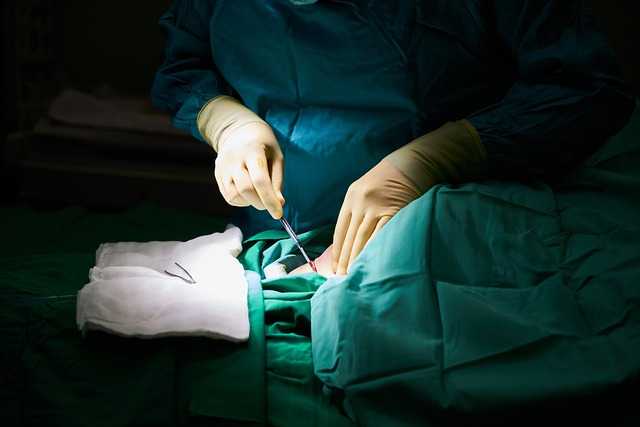Published by Dr MIguel Fernadez Calderón: 09/08/2024
Seromas are one of the most common complications that occur after surgery. In some patients they can heal by themselves, but in other cases the intervention of a cosmetic surgeon may be necessary. Here we will answer the common doubt what is a seroma and why is it produced?We will also highlight the importance of knowing everything about this condition, especially if you are about to undergo an operation.
What is a seroma?
A seroma is the abnormal accumulation of fluids or liquids, called serum, under the skin after a surgical procedure. Seromas form, in most cases, in the area of the incision or in the area where tissues are removed during surgery.
Why does it occur? Causes of Seroma
Common surgical procedures
A seroma can occur during minor surgery, but usually occurs in extensive surgeries involving a large amount of tissue.
The surgeon usually places drains around the incision in order to prevent the appearance of seromas; however, this does not occur in all patients, and it is possible that after one or two weeks fluid may begin to accumulate in the surgical area.
Some of the surgical procedures in which seromas may form include:
- Surgeries to improve body contour, such as liposuction or lifting of the arms, breasts, buttocks or thighs.
- Breast augmentation or reduction surgery.
- Surgery to repair a hernia.
- Tummy tuck or Abdominoplasty.
- Cesarean section.
Associated risk factors
There are some aspects that may increase the possibility of presenting seromas, although not necessarily in all patients these factors will indicate that seroma will occur. Among them:
- Extensive surgeries. Seromas are one of the irregularities that can occur after liposuction.
- Surgeries involving a large amount of tissue.
- Patients who have a history of seromas after other cosmetic surgeries.
Symptoms and signs of seroma
Initial signs and symptoms
A seroma usually looks like a cyst or lump that forms under the skin near the surgical incision. It can cause pain and tenderness in the skin.
Seromas may cause clear or yellowish discharge, but we must be able to differentiate this fluid from the thick, odorous fluid that is produced when there is an infection. In addition, the skin surrounding the seroma may feel warm to the touch.
Potential complications
A seroma can drain fluid to the surface. If it is a thick, odorous fluid that changes color, it is a sign that an abscess has formed and in these cases medical attention is required, since it will not go away on its own and may increase in size.
An infection should be attended to immediately because, if it spreads to the blood, sepsis or serious illness may develop.

How to Diagnose Seroma?
Diagnostic methods
Through a postoperative physical examination, observation and exploration of the affected area by the surgeon, the presence of a seroma can be determined.
In some patients, ultrasound may be required to determine if fluid has accumulated under the skin, as well as the size and location of the seroma.
Differentiation from other post-surgical problems
Seromas can be differentiated from other post-surgical problems such as infections and hematomas by the characteristics of each.
In seromas, the fluid is clear and watery in consistency, while hematomas are filled with blood and infection is caused by accumulation of pus.
Regarding pain, appearance and inflammation:
- Seromas usually cause mild pain, moderate hematoma and intense infection.
- The seroma looks slightly reddened, while the hematoma and infection do show more redness.
- As for swelling, that of seroma is soft and fluctuating; in hematoma it is firmer; and in infection it may be soft, but very evident.
Seroma Treatment
Non-invasive treatment options
When seromas are small, it is very likely that they do not require any treatment, since the body usually reabsorbs these liquids naturally. In case of swelling, discomfort and pain, the doctor may prescribe over-the-counter painkillers.
If the seroma is larger and causes a lot of pain, the doctor may indicate to drain it by aspiration with a needle.
Surgical interventions
If the seroma refills after drainage, the surgeon will most likely recommend complete removal by a minor surgical procedure.
Seroma Prevention
Preoperative measures
Choosing an experienced and qualified surgeon is one of the most important preliminary measures to consider before surgery. A doctor with sufficient experience will make sure to take all the necessary measures to avoid complications such as seromas, although we know that in any surgery there is a level of risk.
Postoperative care
To avoid complications after abdominoplasty or any other surgery, and the formation of a seroma during the postoperative period, it is important to follow the surgeon's instructions to the letter. Avoidance of strenuous physical activity until authorized is essential for an adequate recovery.
The surgeon may recommend the placement of surgical drainage systems. Also, the use of compression garments helps to reduce swelling and bruising from the surgery. All of this can be effective in reducing the chances of developing a seroma.
Conclusion
When undergoing any surgery that involves a significant amount of tissue, there is a possibility that a seroma may develop. In this article you have been able to learn what a seroma is and why it occurs, information that is essential to know before undergoing abdominoplasty or any other invasive surgical procedure.
Choosing the right surgeon and following his or her instructions both preoperatively and after surgery can reduce the risk of seroma. Remember that in case of any symptom it is essential to seek medical attention immediately to avoid possible complications.









